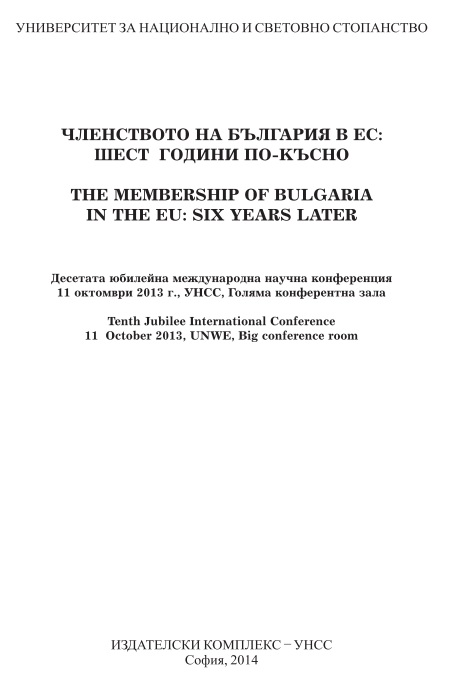Динамика и структура на териториалната кохезия в ЕС и България през периода 2007 – 2012 г.
Dynamic and structure of territorial cohesion in the EU and Bulgaria in the period 2007 – 2012
Author(s): Neno Dimov, Kristina Minova
Subject(s): Politics / Political Sciences, Politics, Economy, National Economy, Supranational / Global Economy, Economic policy
Published by: Университет за национално и световно стопанство (УНСС)
Keywords: Cohesion; Cohesion Policy; EU; Regional Policy; Regional Cohesion
Summary/Abstract: The territorial cohesion is a fundamental principle of regional policy among the EU countries. Cohesion, or cohesion in the socio-economic and environmental development of the countries of the community, is applied in order to limit and reduce territorial (spatial) inequalities, which always arise objectively in the course of natural and social dynamics. This problem has been identified as a priority for the EU since the early 1990s. The main objectives related to the territorial cohesion policy are: - How to use the strengths and weaknesses of each territory to make a qualitative transition to sustainable and balanced development (regional and national level)? - How to achieve effective territorial concentration of resources? - How to minimize the costs of land management, respectively in urban areas, rural areas and specific areas? In the last two decades, the socio-economic development of Bulgaria has been accompanied by growing regional inequalities - demographic, urban, economic, infrastructural. Despite the already performed assessments and evaluations, this tendency is deepening, which is accompanied by an increase in the costs of material and financial resources for territorial governance. Studies were conducted at a national level in the countries of Western and Central Europe, which revealed processes of increasing territorial disparities in the development and territorial organization of natural social systems. Therefore, for the period 2001-2011, in spite of the consistently pursued and targeted funding of territorial cohesion policy in the EU, the added value received is low, and for individual countries and regions - negative. Or in other words - the economic and social rifts in the community are widening. From these starting points, a comparative analysis of some key indicators for the EU and the statistical regions of NUTS-2 level classification was conducted.
Book: Членството на България в Европейския съюз: шест години по-късно
- Page Range: 245-256
- Page Count: 12
- Publication Year: 2014
- Language: Bulgarian
- Content File-PDF

